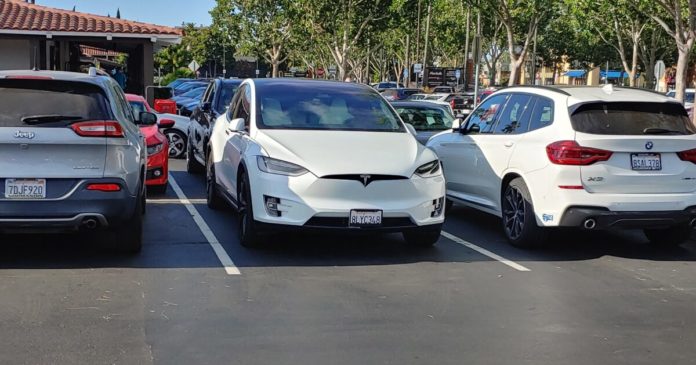Santa Clara County is leading the way in electric car purchases as sales soar across the state.
More than 43% of new car purchases registered in the county this year were zero emission vehicles, the highest in the state, according to 2023 California Energy Commission data. Last year the county’s percentage was 34%.
Laura Neish, executive director of 350 Bay Area, a grassroots climate organization, said she is not surprised the county is paving the way in sales because Silicon Valley is “the home of early adopters and people enthusiastic about technology.”
“The most important thing we can do right now is to really accelerate the shift away from (gas) vehicles to electric versions,” Neish told San José Spotlight.
Neish is a proud electric car owner and said concerns about long distance travel shouldn’t prevent consumers from purchasing an electric car. She has driven her Volkswagen I.D. 4, which has a range of 275 miles per charge, from Santa Rosa to Portland, Oregon, which is more than 600 miles and charging along the way.
The average electric car can travel 100 to more than 400 miles on a single charge, depending on the make and model, according to the U.S. Department of Energy. The average driver in the U.S. drives 37 miles a day and an estimated 13,500 miles per year, according to 2023 data from the Department of Transportation.
The most popular electric car in the county according to the CEC, is a Tesla model Y, which can go up to 330 miles on a single charge. The company has constructed a fast-charging infrastructure network along major transportation arteries to support its vehicles. In June, news outlets reported that Tesla’s charging station network is quickly becoming the standard, which would make it an easier, more attractive option for consumers purchasing any EV brand. Currently, one of the deterrents is a lack of charging stations for long distance road trips.
Teslas make up around 67% of new electric car sales in the county, around 12% higher than the rest of the state, where they comprise an estimated 55% of sales, according to CEC. The commission said it expects the trend to continue as electric car sales are encouraged.
“There’s not a compelling reason to think this will stop anytime soon if at all,” Toan Lam, CEC spokesperson, told San José Spotlight.
By 2035, all new cars sold have to be electric in the state due to a mandate issued by Newsom’s office in 2020. The change will be incremental– 35% of new cars sold in 2026 will be electric, 68% in 2030 and 100% in 2035.
Last year, San Jose incentivized zero emission cars in low-income and disadvantaged areas, but also ended a decades-long parking incentive program that allowed electric cars to park for free. San Jose councilmembers voted unanimously to create a policy to eliminate the city’s minimum parking requirements for new developments in an effort to reduce its carbon footprint.
The CEC said zero emission vehicles are a part of the solution to reduce emissions in the state, but it also wants to increase city designs that reduce car dependency. The state did away with parking minimums for new developments near transit stations last year.
Neish said while the increase in sales is a good start, she wants to see more tax breaks for electric car owners at the state level to boost sales and more legislation aimed at reducing emissions.
“Most cars on the road are still burning fuel and burning fuel creates, not just climate change, but a lot of dangerous situations to our health,” she said. “Anything we can do to speed that up is a good thing.”
Contact Annalise Freimarck at [email protected] or follow @annalise_ellen on Twitter.

